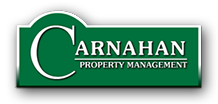Property Inspections
The Four Key Types of Landlord Inspections
These four inspections can and will help you to keep your properties in good repair, hopefully well-maintained by your tenants, and protect you when you find yourself in front of a judge defending your security deposit decisions.
Move-in Inspection
This inspection, of course, is conducted during the move-in process. It must be conducted by the tenant and it must be documented. And, if you think you can move a tenant into a property without physically being present you are fooling yourself. So, as part of your move-in package, you will have a “Move-in” inspection sheet(s). The tenant needs to walk through the property and document issues with the property that could be a deduction from their security deposit when they leave. This inspection is not intended as a wish list for things they want done to the property. Of course, we are assuming the property was ready for the tenant or you wouldn’t have placed them.
You want this inspection to be conducted by the tenant so that they can never say that they did not know the condition of the property when they moved in. Once the inspection is completed, the tenant should sign and date the document and hand it back to you. If there are issues such as a small stain in the carpet or a ding in the wall you should take a picture of it, print the picture and place it with “Move-in” inspection.
Routine Safe & Clean Inspections
This is exactly what it says — a routine inspection, performed by you to ensure that the property is safe and clean. This inspection should be conducted every 3 – 6 months; to go any longer and you may loose control of the overall condition of your property. Realize that when you are conducting this inspection you are looking for issues which the tenant has caused, such as pulling a door off it’s hinges, and those items you are responsible for such as a leaking faucet. Again, this inspection is documented, supported by pictures, signed by you with a copy provided to the tenant. If there are any issues, a follow-up inspection should be scheduled so you can verify the tenant has corrected the issues they are responsible for. As for those issues you need to address, get on it!
Drive-by Inspections
This inspection needs no pre-notifications. All you’re doing is driving by and observing. Again, if there are issues observed on the outside of the property (the biggest one for me is typically pets that aren’t allowed), you should notify the tenant (in writing) and of course, schedule a “safe and clean” inspection.
Move-out Inspections
The “move-out” inspection is your opportunity to determine the overall condition of the property when the tenant moves out. This inspection should be conducted by you at the time you receive the keys from the tenant. Realize that if you have the tenant drop the keys off at the office or put them in the mail, they will be able to deny everything you find on the “move-out” inspection because you weren’t there when they last locked-up and they will be able to blame you for all of the issues you claim when retaining their security deposit. The only way to protect yourself is to conduct that inspection with the tenant in the property. Ideally you want the tenant to sign the inspection findings, but many times the tenant will decline, believing that if they don’t sign they won’t be responsible. One last item here — remember that your camera is your best friend; it is very hard for a tenant to deny in front of a judge what is obvious in a picture.
Contact Us
Use the form below to contact us!
